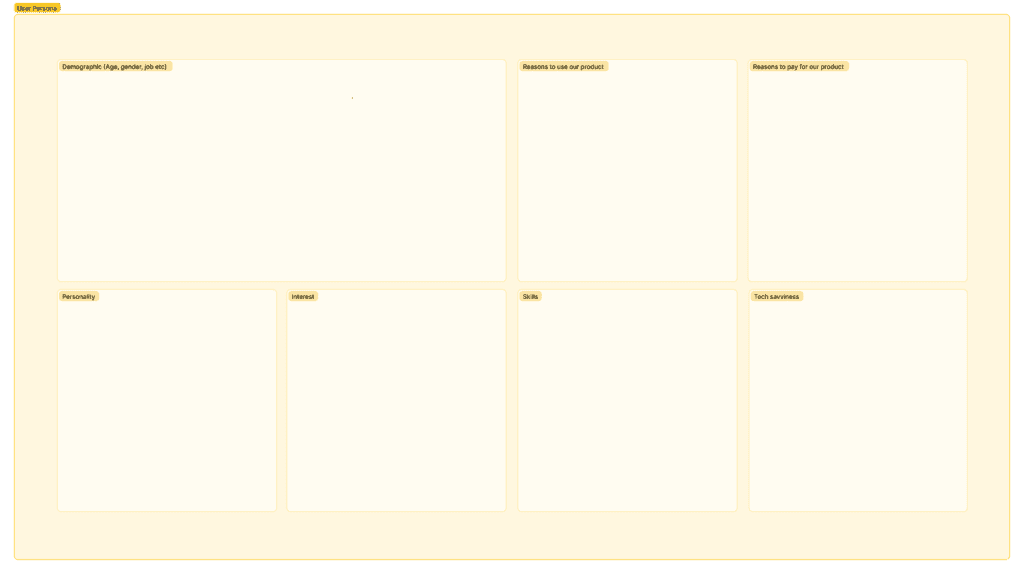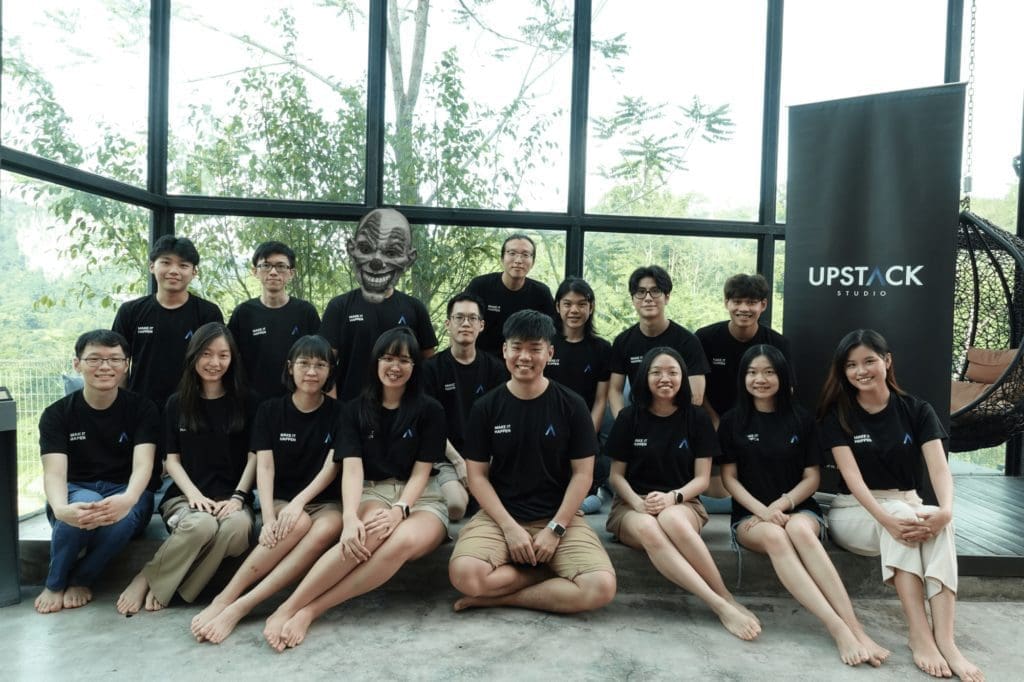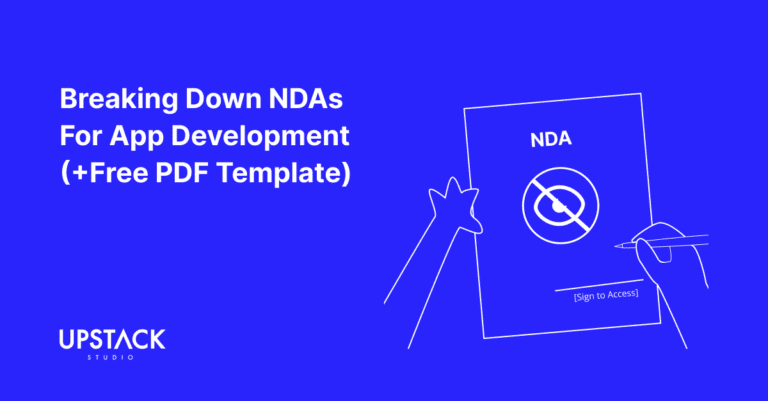Pssst, you looking for an app developer?
Disclaimer: This article is a sales pitch!
In case you hadn’t noticed, Upstack Studio is a web and mobile app developer based in Kuala Lumpur, Malaysia, though we’ve served clients from all over the world.
If you’re thinking of building a mobile or web app for your business, we got you.
Those other developers?
Hmmmph!
This is what it looks like when their senior developers are choosing a technology stack:

Point is, they are grasshoppers.
Fledgelings.
Mere infants compared to the greatness that is Upstack Studio!
Hang on, you smell that?
We think we accidentally went a bit too far up our own butts.
Let’s start over.
Upstack Studio Wants to be Your App Developer
Why, hello there.
Are you currently looking for a mobile or web app developer?
Our Upstackers are just the team to help founders bring their app ideas to life, especially those without a technical background.
Be it mobile or web application development, we’ve been at it for the past five years, and we’ve got a portfolio we’re very proud of.
But just like biceps and bank accounts, a portfolio can never be too big.
We’re always eager to serve and build apps the right way, and for the right clients.
With that in mind, we’d like to share what you can expect with Upstack Studio as your app developer.
We’ll break it down into three distinct parts:
- Pre-development
- During development, and
- Post-development
So, let’s say we want to work with each other, what happens next?
Pre-development at Upstack Studio
Goal: Understand client vision and planning project scope.
We’d like to start by sharing how we don’t work at Upstack Studio.
We can’t (and therefore don’t) give quotations to requests that come out of the blue like the one from this charming gentleman below:

We get tons of these, and it’s really no way to start off something long-term like app development.
What’s wrong?
They barely tell us anything.
They barely tell you anything.
Certainly not enough to get a decent price and time cost estimate.
We could throw out an average figure, but it wouldn’t be accurate.
Even if a client says yes, it’s a false estimate. That ‘yes’ is not grounded in reality, and when the real world sets in, the project likely stalls or crashes.
Like any good app developer, Upstackers want to understand (and agree with) your whole picture.
Only then can we break it down and tell you what we think it will cost.
First, we send you an App Brief template to fill in and give us a baseline understanding of your idea.
Next, we invite you to a Product Roadmapping Workshop.

It’s four to six hours long and by the end of it, we will be best friends (and completely exhausted).
More importantly, we will have clarity on the following:
- The user demographic you are targeting
- Their most sensitive pain points
- The most compelling value proposition we can offer
- A desktop or mobile solution first
- A list of the most crucial features for a Minimum Viable Product or Minimum Lovable Product
- And how much of those we can complete in the next 4-6 months
As developers, this tells us:
- The scope of the project (platforms and features)
- Resources needed (staff seniority and technology stack)
- Total cost and time estimates (hourly rate and total hours)
Initial Questions Founders Might Have
1. How much is app development cost at Upstack Studio?
We’ve always been transparent about this: App development cost at Upstack Studio is about average for a Southeast Asian agency.
We don’t compete on price because we do our best to hire and retain good talent – we compete based on results and smooth communication.
We also ask for at least 30% upfront, and we invoice you every two weeks – like a pay-as-you-go service.
Standard practice.
2. What’s a Minimum Lovable Product?
Same as a Minimum Viable Product, except we’re not just after the bare minimum for a functional solution.
We also want it to elicit a positive emotional response from users.
With just a bit more work, we can make your users genuinely enjoy using the solution even in its early stages.
For a deeper look at our philosophy on Minimum Lovable Products, check out our article on MLP vs MVP.
3. Why 4-6 months?
In our experience, that’s the longest that can be safely planned for.
No real point going beyond that, because things will come up that disrupt all that planning anyway.
4. How big will my development team be?
You will be assigned at least one:
- UI/UX designer
- Full stack developer
Their seniority depends on how complex your project is.
You also get one project manager to oversee everything.
Most of the time, they’re sweet, loving angels.
However, should they think a founder is making a bad decision or suspect the development team could be moving faster, they can be very persuasive.

During development at Upstack Studio
Goal: Iterate toward a market-ready Minimum Lovable Product (MLP)
The actual app development will consist of these stages:
- UI/UX design (4 – 6 weeks)
- Back and frontend development (12 – 18 weeks)
- QA & testing (2 – 4 weeks)
- Launch (1 – 2 weeks)
Disclaimer: These are average ranges and will vary slightly with each project – but we promise we won’t take ten years to deliver your app.
If we’ve reached this stage, it means you’ve agreed to our preferred methodology and approach: Agile and Scrum.
Here’s what that looks like in practice.
Step 0: The project is divided into blocks of time called sprints each lasting two weeks.
Step 1: We meet with you before a sprint to discuss action items.
Step 2: We align on what needs to be done within the coming two weeks.
Step 3: We adjourn to build the product while you do your…founderly things?
Step 4: We regroup at the end of two weeks for a progress update and plan the next sprint.
Step 5: Repeat until launch.
In between sprints, feel free to raise urgent matters, but otherwise treat no news as good news.
You don’t want to get on your project manager’s ‘persuasive’ side.

Now, we say our methodology, but obviously we didn’t invent Agile.
It’s used across many industries whenever people are trying to introduce a new solution, but they’re not sure what the market specifically wants.
That’s the situation most founders are in, whether they realize it or not.
So what we do is create a prototype to test on users and validate your idea bit by bit.
Those meetings in between sprints?
That’s where we decide what sort of changes might be needed.
That’s why we want you involved in the decision-making – it’s your idea.
Speaking of meetings, Upstackers work fully remotely, so we use communication tools to align internally and with clients.
We personally use:
- ClickUp to manage our projects
- Google Meet for meetings
- Slack for real-time communication
- Figma for visual brainstorming and to show designs, mockups, wireframes, etc,
After X number of sprints, your app or site is ready for launch.
We also help our clients out with app store submission processes, since we’ve done it so many times it’s like going on autopilot.
Post-development at Upstack Studio
Goal: Iterate new versions of app, solving bugs and installing patches as needed.
Now we start iterating in earnest.
User reviews will start coming in – our job will be to follow through with complaints, suggestions and legitimate issues.
You keep the core team, and meeting frequency stays the same, it’s just that our goalposts have shifted.
Solving the inevitable bugs will top our list of priorities.
After that, it becomes all about maintenance.
Around this time, you can start looking around for an in-house developer.
We help you transition to this in-house team, which can be much smaller.
We always build apps with continuity in mind. If for some reason every Upstacker died on the same day, you will have all the files and design elements you need to just hire another developer to take over where we left off.
And that’s the Upstack Studio experience.
On average, it takes about 4-6 months and 30 – $70,000.

Why trust Upstack Studio?
Everything we’ve just explained is to demonstrate that Upstack Studio has a process.
We’re structured in how we approach app development.
We admit that applies to lots of agencies.
Here’s where we believe we stand out from the pack:
- We don’t pretend to know what we don’t. This applies to tech stacks, app types, to anything, really.
- We stay in our lane. Sometimes we’re just not a good fit for a founder’s needs and have no problem saying so.
- We are very comfortable being firm with founders about what we believe is the best way forward – for their best interests.
- We think smart, act stupid. We don’t take ourselves too seriously, but we take the work very seriously.
We’re not trying to be kind or charitable by saying no to money.
Like we said at the start of the article, this is a sales pitch.
It’s just that in the long run, we know that nothing sells like competence, politeness, and transparency.
So that’s what we sell.
Competent, polite and transparent web and mobile app development.
When you hire Upstack Studio, that’s what you’re buying.
And for non tech founders, we really think that’s something you can’t put a price on.
Actually, you can – just look at the invoice.
Below, we’d like to share a couple of resources to get you started.
The first one is our App Brief Template, a simple questionnaire to help us gather preliminary information.
Download a copy through the form below if you’re reaching out to us.
App Brief Template
Download this FREE editable template now to craft your perfect App Brief! Let us know where should we send it through the form below.
The second one is for a free strategy session.
Ask us any questions you have on app development; methodology, tech stacks, features, mobile vs web apps, and whatever you can think of.
Just be ready to answer some questions of our own as well!



